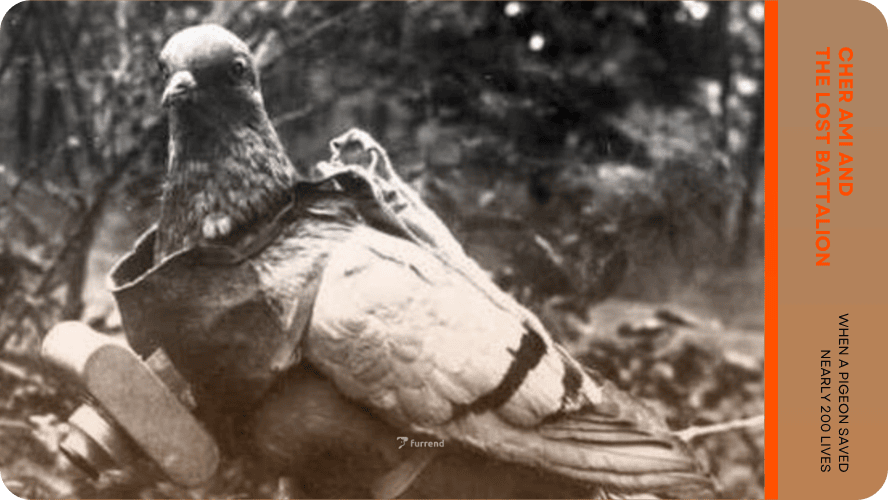
October 21, 2025
Cher Ami and the Lost Battalion: When a Pigeon Saved Nearly 200 Lives
In a war defined by machinery and destruction, one bird reminded the world what courage looks like.
During World War I, as nations fought with tanks, artillery, and gas, one of the most effective tools of communication had feathers. Pigeons became lifelines, carrying messages across trenches and through smoke when all else failed. Among them was Cher Ami, a small black check cock homing pigeon, who would become one of the most decorated heroes of the war.



By 1914, WWI had become the largest conflict the world had ever seen. Armies relied on telegraphs and field phones, but in the chaos of battle, those lines were easily cut or destroyed. Pigeons with their powerful homing instincts became invaluable for communication. Britain, France, and the United States trained thousands of them to deliver messages across miles of open battlefield. Each bird carried a small metal canister tied to its leg, often containing life-or-death intelligence.
In October 1918, during the Meuse-Argonne offensive, more than 500 men of the U.S. 77th Division were trapped behind enemy lines. They were cut off, low on food, and under heavy fire, they were surrounded by German troops. And worse of all, being shelled by their own artillery. Their attempts to send runners failed; every one was captured or killed. They turned to their pigeons. One by one, each bird was shot down or disoriented by explosions.
Only one remained, and that's Cher Ami.
Major Charles Whittlesey from the Lost Battalion scribbled a desperate message: “We are along the road parallel 276.4. Our artillery is dropping a barrage directly on us. For heaven’s sake, stop it.”
The note was placed in the capsule on Cher Ami’s leg, and the bird was released into the chaos. He was immediately hit, shot through the chest, blinded in one eye, and nearly losing a leg. But somehow, he kept flying.
He covered 25 miles in 25 minutes. When he reached headquarters, his message still attached, his feathers were soaked in blood. The artillery was halted. Of the trapped soldiers, about 194 survived.
Army medics treated Cher Ami’s wounds, fitting him with a small wooden leg. He became a symbol of courage and devotion, honored with France’s Croix de Guerre for heroic service. After his death in 1919, his body was preserved and later displayed at the Smithsonian Institution, where he remains to this day perched eternally, one leg carved from wood.
In 1931, Cher Ami was inducted into the Racing Pigeon Hall of Fame, and in 2019, he was posthumously awarded the Animals in War & Peace Medal of Bravery on Capitol Hill. His story has lived on in books, documentaries, and even a 1919 silent film 'The Lost Battalion,' where he appears briefly, hopping on one leg.
Over a century later, Cher Ami’s story reminds us that courage isn’t about size or strength. Sometimes, it’s about a single, small creature who refuses to give up, even when the sky itself seems impossible.



More stories
Furrend circle
Be the first one to hear about updates